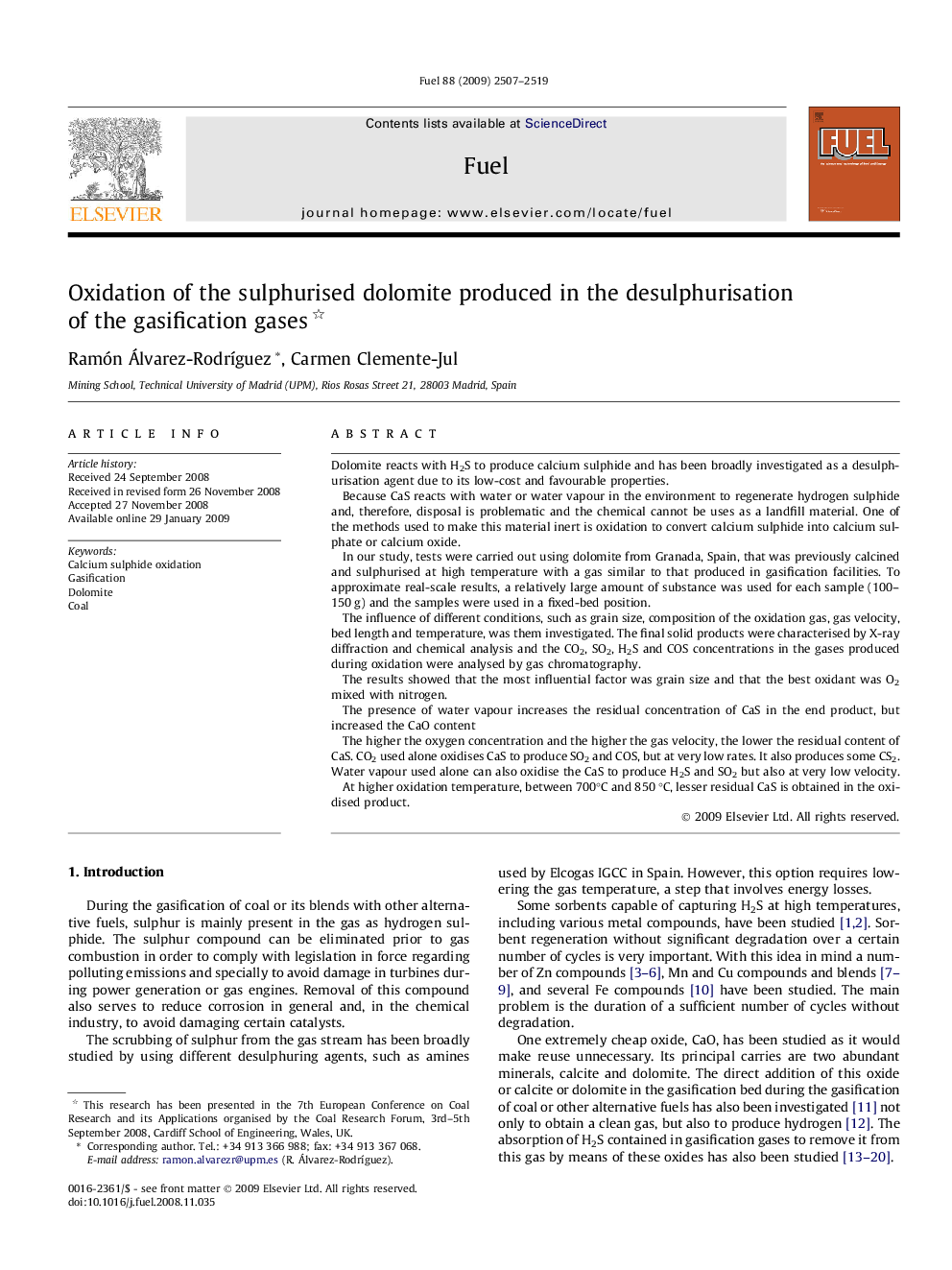| Article ID | Journal | Published Year | Pages | File Type |
|---|---|---|---|---|
| 207859 | Fuel | 2009 | 13 Pages |
Dolomite reacts with H2S to produce calcium sulphide and has been broadly investigated as a desulphurisation agent due to its low-cost and favourable properties.Because CaS reacts with water or water vapour in the environment to regenerate hydrogen sulphide and, therefore, disposal is problematic and the chemical cannot be uses as a landfill material. One of the methods used to make this material inert is oxidation to convert calcium sulphide into calcium sulphate or calcium oxide.In our study, tests were carried out using dolomite from Granada, Spain, that was previously calcined and sulphurised at high temperature with a gas similar to that produced in gasification facilities. To approximate real-scale results, a relatively large amount of substance was used for each sample (100–150 g) and the samples were used in a fixed-bed position.The influence of different conditions, such as grain size, composition of the oxidation gas, gas velocity, bed length and temperature, was them investigated. The final solid products were characterised by X-ray diffraction and chemical analysis and the CO2, SO2, H2S and COS concentrations in the gases produced during oxidation were analysed by gas chromatography.The results showed that the most influential factor was grain size and that the best oxidant was O2 mixed with nitrogen.The presence of water vapour increases the residual concentration of CaS in the end product, but increased the CaO contentThe higher the oxygen concentration and the higher the gas velocity, the lower the residual content of CaS. CO2 used alone oxidises CaS to produce SO2 and COS, but at very low rates. It also produces some CS2. Water vapour used alone can also oxidise the CaS to produce H2S and SO2 but also at very low velocity.At higher oxidation temperature, between 700°C and 850 °C, lesser residual CaS is obtained in the oxidised product.
